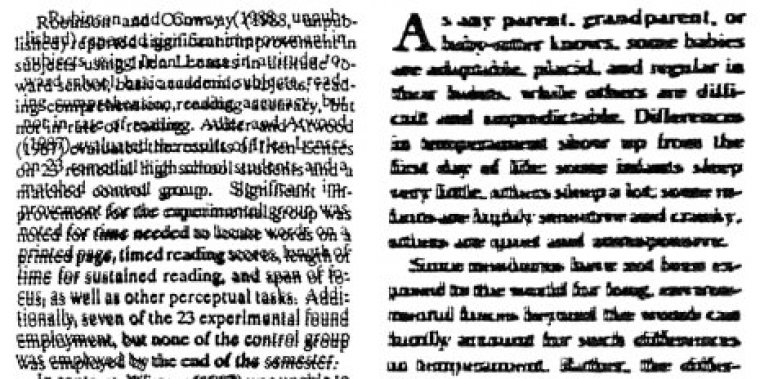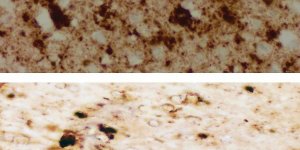| Health / Health News |
Arrangement of light receptors in the eye may cause dyslexia
Research published by Albert Le Floch and Guy Ropars of French University of Rennes claims dyslexia may be caused by the way the photoreceptors in their eyes are arranged.

Simulation of dyslexic vision. ![]()
In dyslexic individuals, the pattern of photoreceptors in the right eye is similar to that on the left and produces a "mirror image", while in non-dyslexic individuals, there are two different patterns in the two eyes, researchers found in their study.
Individuals with dyslexia have difficulty reading, especially distinguishing between letters that are mirror images of each other, like the characters 'b' and 'd' or 'p' and 'q'.
In the back of the eye, there is a site called the fovea which contains cone cells, of three kinds responding either to red, green, or blue light. In one patch within the fovea, there are cone cells for red and green but none for blue. In the dominant eye, with greater connectivity to the brain, this spot was found to be round while in the other eye, it was asymmetrical.
This, researchers speculate, allows the brain to choose just one of the two images to work with. The researchers observed the dyslexic individuals have round spots in both eyes, which produces mirror images, and the brain can not decide which one to consider.
Using an LED lamp, researchers observed images from the two eyes do not reach the hemispheres of the brain at the same time, with there being a delay of about ten thousandths of a second.
The researchers were able to use a flashing LED light, which was flashed at high frequency that it became invisible to the observer's eye to allow the study participants to process only one image by "cancelling" one of the two produced in each eye.
Research participants called this LED light the "magic lamp." Ropars said more testing is to be done to confirm this technique's efficacy in treating dyslexia. (Wikinews)
YOU MAY ALSO LIKE




